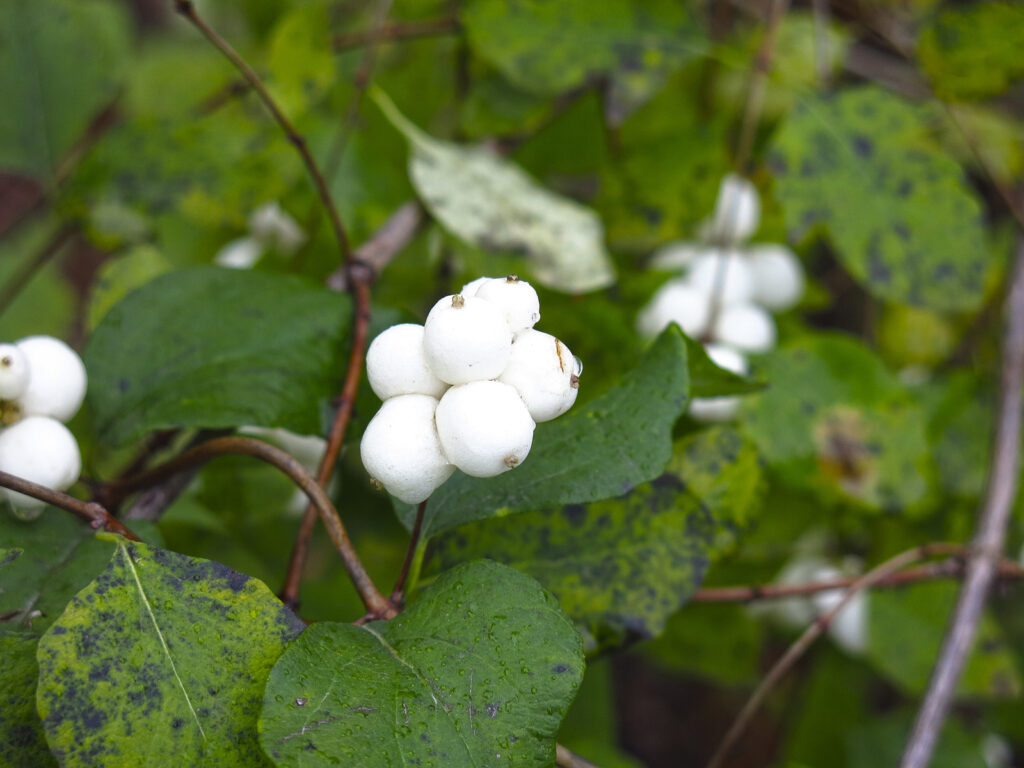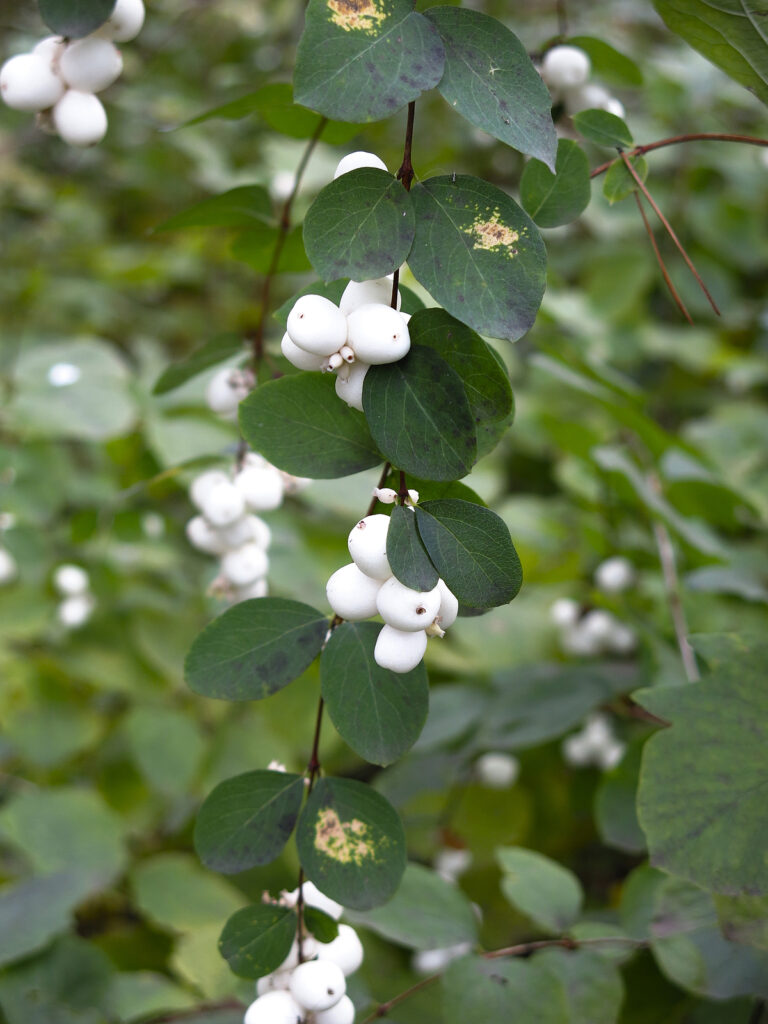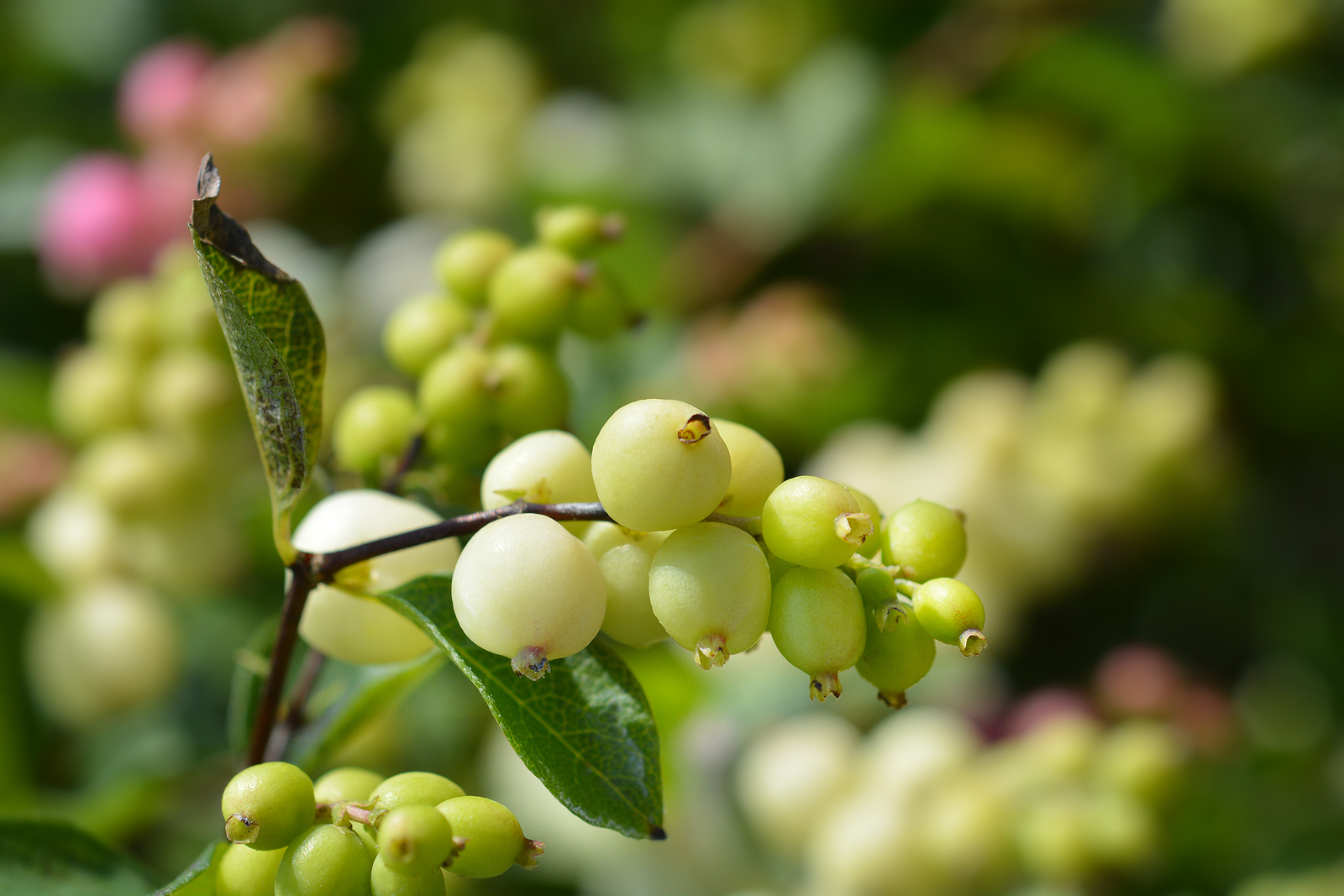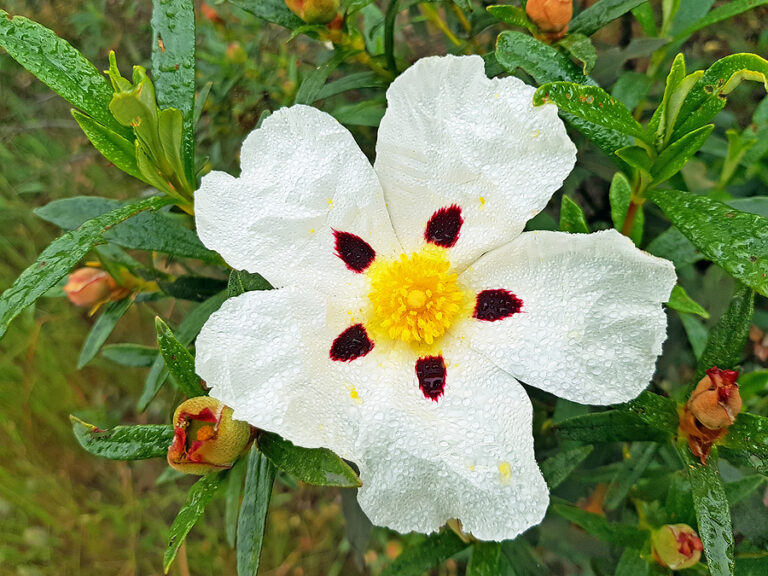How to Grow Snowberry — Symphoricarpos
Symphoricarpos–commonly called snowberry or coralberry–are deciduous shrubs usually grown for their fleshy white to pink or dark blue or purple fruits that hang on the plant well into winter. Symphoricarpos’ fruit is preceded by bell or funnel-shaped, nectar-rich white to pink flowers.
Symphoricarpos is very hardy. It is tolerant or poor soil and pollution. It can be grown on exposed sites as a groundcover, informal hedge, border, or screen.
Symphoricarpos is a genus of about 17 species. The genus is native to woodlands and thickets in Western China and North and Central America.

Get to know Symphoricarpos
- Plant type: Deciduous shrubs
- Growing zones and range: Zone 2 to 7 depending on the variety
- Hardiness: Hardy to Zone 3
- Height and width: 3 to 6 feet (1-2m) tall and wide depending on the variety
- Growth rate: Fast
- Form and habit: Low growing, often spreading by root suckers
- Foliage: Simple and oppostire leaves.
- Flowers: Small, pink-tinged or white flowers in clusters or spikes
- Fruits: Attractive, round, berrylike fruit remains on stems after leaves drop in autumn
- Bloom time: Summer and fall
- Uses: Informal hedges, erosion control on slopes, and naturalizing difficult areas; nice in winter arrangements; attracts birds
- Garden companions:
- Common name: Snowberry, coralberry
- Botanical name: Symphoricarpos
- Family name: Caprifoliaceae
- Origin: North America, Mexico, and China
Where to plant Symphoricarpos
- Plant Symphoricarpos in full sun or light shade.
- Plant Symphoricarpos in almost any soil; it will stand rather dry soil if necessary.
When to plant Symphoricarpos
- Set Symphoricarpos in the garden in spring or autumn.
- Divide plants in autumn.
Planting and spacing Symphoricarpos
- For Symphoricarpos hedges, set plants 2-2.5 feet (.6-.8m) apart.
How to water and feed Symphoricarpos
- Give Symphoricarpos moderate water.
- Feed Symphoricarpos with an all-purpose organic fertilizer in spring.
How to care for Symphoricarpos
- Symphoricarpos don’t need pruning except for shaping.
Symphoricarpos pests and diseases
- Symphoricarpos can be attacked by anthracnose and powdery mildew.

Symphoricarpos propagation
- New Symphoricarpos plants are best started by cutting away and replanting a rooted offshoot of the plant.
- Symphoricarpos can also be started from softwood cuttings of young growth in late spring or early summer, from semihardwood cuttings of more mature growth in mid- or late summer, or from hardwood cuttings of dormant leafless growth in late fall or winter.
Symphoricarpos varieties to grow
- Symphoricarpos albus, Common snowberry, upright or spreading shrub 2-6 feet (.6-1.8m) tall. Leaves roundish, dull green, .8-2 inch (2-5.1cm) long—to 4 inches (10.2cm) and often lobed on sucker shoots). Pink flowers in spring, followed by white fruit from late summer to winter. Best fruit production in sun. Not a first-rate shrub, but useful in its tolerance of poor soil, urban air, and shade. Withstands neglect.
- S. albus laeviǵatus, Snowberry, grows 3-6 feet (.9-1.8m) tall, with arching stems set with 1-1.5 inch (2.5-3.8cm) deep green leaves. In early summer the ends of twigs produce tiny flowers, followed by clusters of .5 inch (1.3cm) snow-white waxy berries that cling until late fall. Many nurseries list this as S. albus or S. racemosus. Zones 3 to 9.
- S. chenaultii, Chenault coralberry, 3 feet (.9m) high, has fall-ripening .3 inch (.8cm) berries that are mostly pink, but white on their shaded sides. Its arching stems are lined with tiny pink blossoms in midsummer. The fruit and the .5-1 inch (1.3-2.5cm) leaves cling until late fall. Zones 4 to 9.
- S. mollis, Creeping snowberry, Spreading snowberry, like S. albus, but usually less then 1.5 feet (.5m) high, with earlier and sparser bloom, smaller fruit. Spreads like ground cover. Best in parial shade.
- S. orbiculatus (also called S. vulǵaris), Indian currant, coralberry, grows 6 feet (1.8m) tall; it has .5-2 inch (1.3-5.1cm) leaves and arching stems tipped with tiny yellowish white blossoms in midsummer; .3 inch (.8cm) purplish red berries ripens in early fall. This species is often used to control erosion on slopes because its matted root system holds soil in place. Zones 2 to 9.







